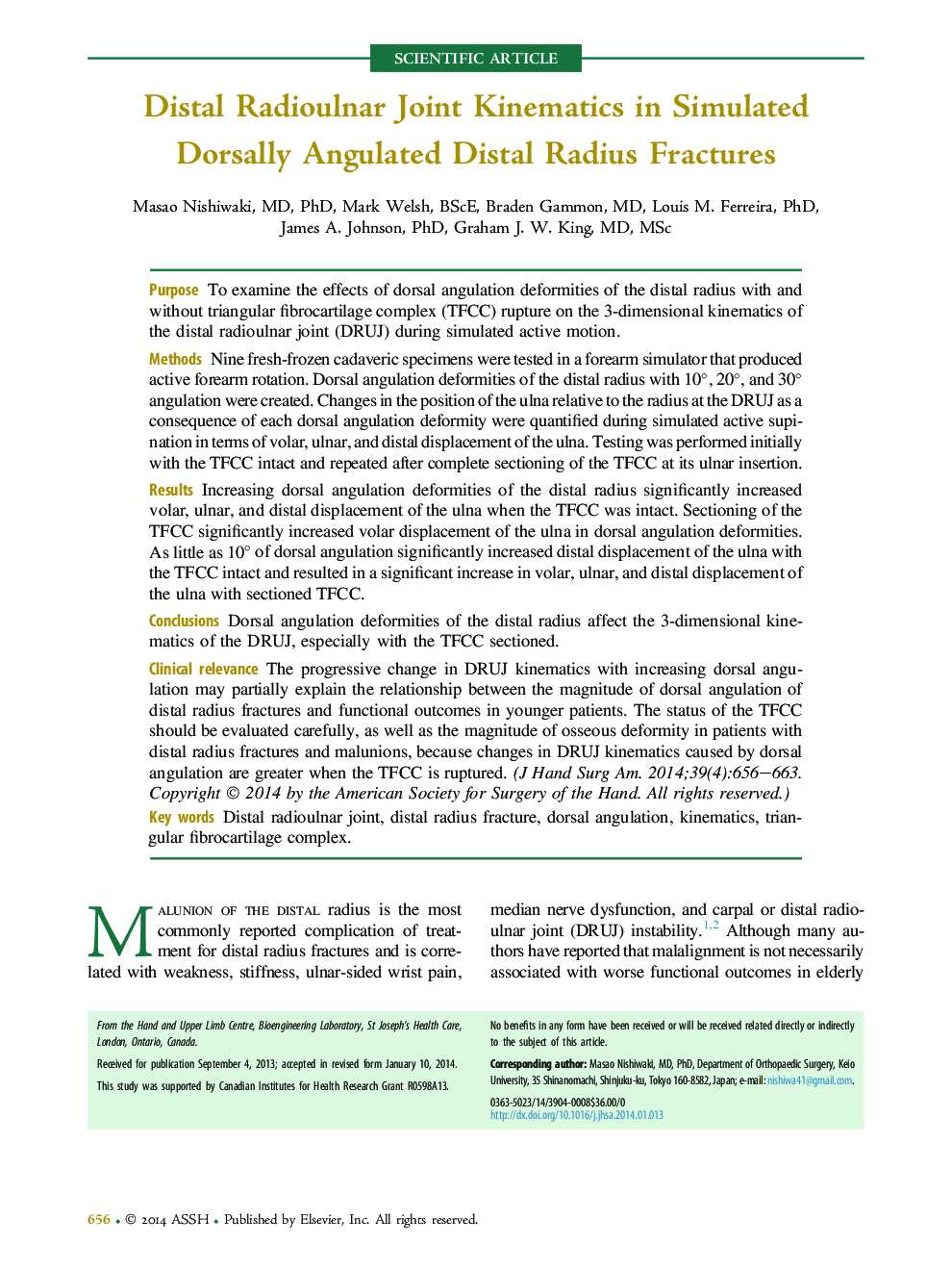| کد مقاله | کد نشریه | سال انتشار | مقاله انگلیسی | نسخه تمام متن |
|---|---|---|---|---|
| 4067676 | 1604371 | 2014 | 8 صفحه PDF | دانلود رایگان |

PurposeTo examine the effects of dorsal angulation deformities of the distal radius with and without triangular fibrocartilage complex (TFCC) rupture on the 3-dimensional kinematics of the distal radioulnar joint (DRUJ) during simulated active motion.MethodsNine fresh-frozen cadaveric specimens were tested in a forearm simulator that produced active forearm rotation. Dorsal angulation deformities of the distal radius with 10°, 20°, and 30° angulation were created. Changes in the position of the ulna relative to the radius at the DRUJ as a consequence of each dorsal angulation deformity were quantified during simulated active supination in terms of volar, ulnar, and distal displacement of the ulna. Testing was performed initially with the TFCC intact and repeated after complete sectioning of the TFCC at its ulnar insertion.ResultsIncreasing dorsal angulation deformities of the distal radius significantly increased volar, ulnar, and distal displacement of the ulna when the TFCC was intact. Sectioning of the TFCC significantly increased volar displacement of the ulna in dorsal angulation deformities. As little as 10° of dorsal angulation significantly increased distal displacement of the ulna with the TFCC intact and resulted in a significant increase in volar, ulnar, and distal displacement of the ulna with sectioned TFCC.ConclusionsDorsal angulation deformities of the distal radius affect the 3-dimensional kinematics of the DRUJ, especially with the TFCC sectioned.Clinical relevanceThe progressive change in DRUJ kinematics with increasing dorsal angulation may partially explain the relationship between the magnitude of dorsal angulation of distal radius fractures and functional outcomes in younger patients. The status of the TFCC should be evaluated carefully, as well as the magnitude of osseous deformity in patients with distal radius fractures and malunions, because changes in DRUJ kinematics caused by dorsal angulation are greater when the TFCC is ruptured.
Journal: The Journal of Hand Surgery - Volume 39, Issue 4, April 2014, Pages 656–663